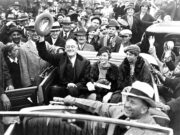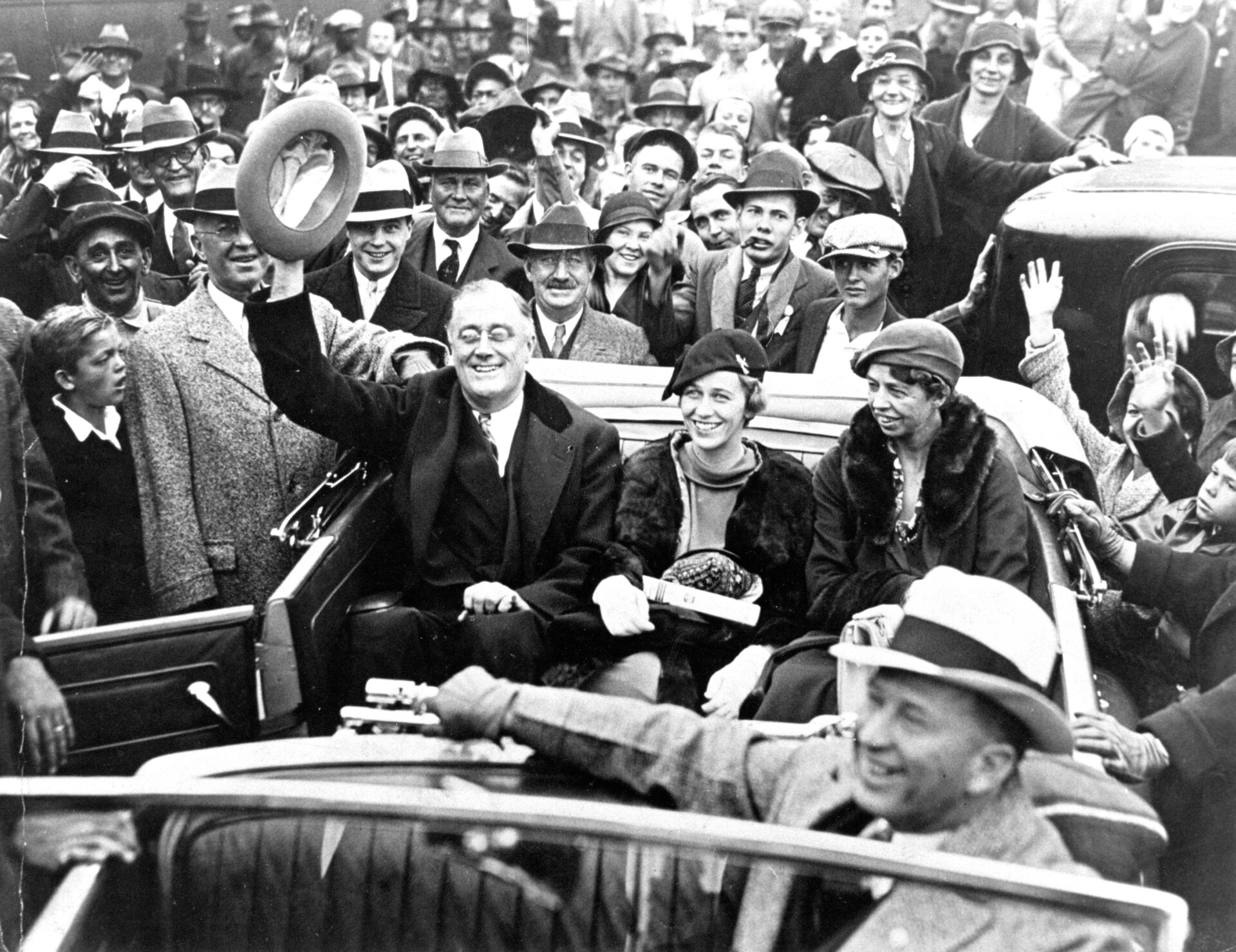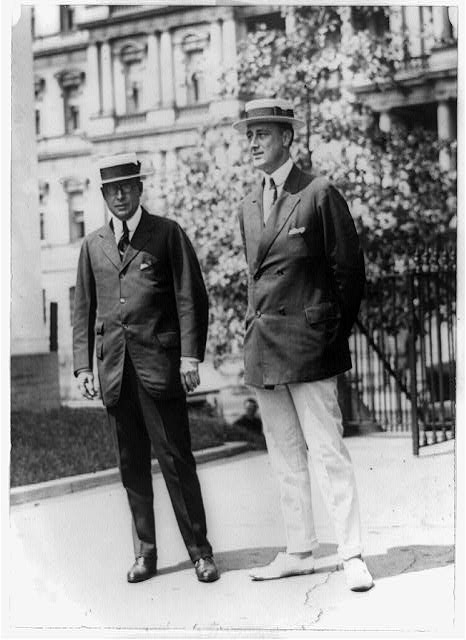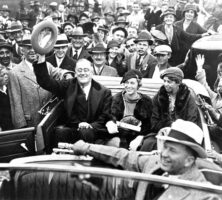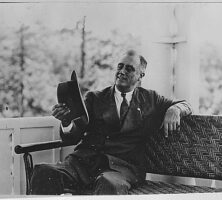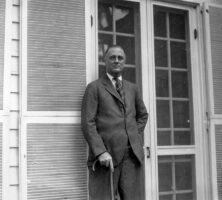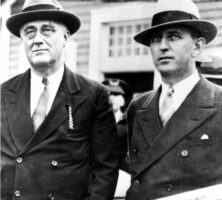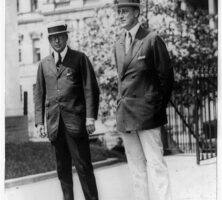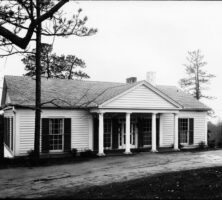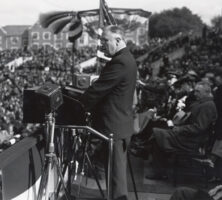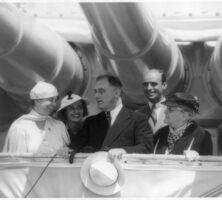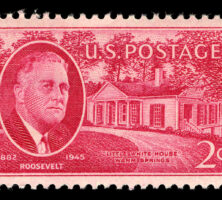Between 1924 and 1945 Franklin D. Roosevelt visited Warm Springs and Georgia forty-one times. In the early years, he spent his days exercising at the pools at the Warm Springs resort as he tried to rebuild his leg muscles from the debilitating effects of polio. After being elected as the thirty-second president of the United States in 1932, he used his new home at Warm Springs, “The Little White House,” as a retreat from the rigors of leading a nation through the Great Depression. He died there in 1945. To a generation of west Georgians, he was both the president and a trusted friend who could be seen waving as he passed by in his convertible or rode by in a train on his way to the nation’s capital.
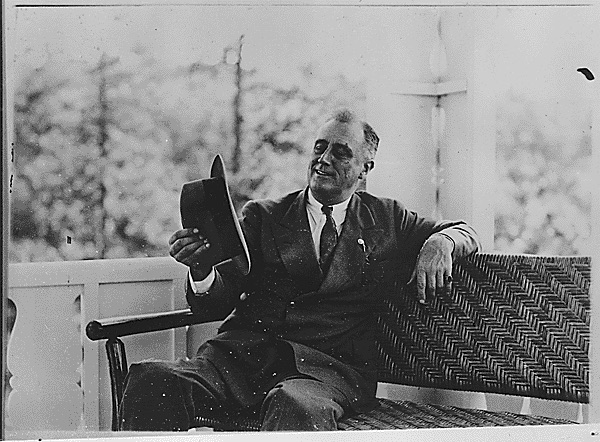
Roosevelt, a native New Yorker, first visited Georgia in 1913 on business for the U.S. Navy in Brunswick. In August 1921 he contracted polio while on a family vacation at Campobello Island in New Brunswick, Canada. He then sought to heal the damage caused by the disease. In October 1924 he learned of Warm Springs and its beneficial waters. He quickly grew to love Georgia and its people, and they welcomed him as their adopted son.
The water at Warm Springs maintains an average temperature of about eighty-eight degrees and bubbles out of nearby Pine Mountain, one of several quartzite ridges running through west central Georgia. According to legend, sick and injured Creek Indians once came to the springs to recover from their ills, in much the same way that Roosevelt used the healing waters. He generally visited in late March and April and again in the fall, when he traditionally shared Thanksgiving dinner with other patients. He swam, sat in the sun, caught up on correspondence, and went for drives in the countryside, which had been devastated by the boll weevil and plummeting cotton prices.
President Roosevelt likely drew inspiration to create New Deal programs such as the Agricultural Adjustment Administration and the Rural Electrification Administration during these drives—indeed, the president called Warm Springs the birthplace of the Rural Electrification Administration in 1938. Georgia farmers were hit especially hard by the Great Depression, and their recovery was slowed by the high cost of electricity, which was used in 90 percent of urban homes and only 10 percent of rural homes by 1935. Electric companies were simply not willing to string miles of wire to widely dispersed rural families, so those families had to go without economic stimulants like the light bulb, the electric water pump, and the electric iron. Roosevelt himself felt this cost in Warm Springs—his first electric bill at the Little White House was four times greater than that of his New York home.
In mid-September 1928 Roosevelt left New York for a visit to Warm Springs. Despite being pressured to run for governor of New York, he felt the timing was wrong to restart his political career and knew that his physical progress would be slowed by the new demands on his time. On October 2, after being tracked down giving a speech in nearby Manchester, Roosevelt reluctantly allowed his name to be submitted to the New York state Democratic convention. He won election as governor of New York that November, though the national Democratic ticket suffered defeat. After being reelected governor two years later, he quickly became a leading contender for the 1932 presidential election. Georgians gave him enthusiastic and strong support from the beginning.
Over the years Roosevelt used his time in Georgia to develop visual tricks, such as leaning against cars or walking with his arm on the elbow of one of his sons, to appear physically fit before the public. Photographs of him fishing, greeting golfers on the golf course, horseback riding, and joining other hunters at possum hunts appeared in national publications. The journalist William Winn described his impact on people of the area a half-century after his death: “He is remembered fondly, even reverently, by locals, to whom he was part friend, part father figure, and, because of the role he played in pulling the South out of the depression, part savior as well.”
Roosevelt made a number of significant political appearances throughout the state. During his first presidential campaign in 1932, he gave the address at Oglethorpe University’s commencement, held at the Fox Theatre in Atlanta. In November 1935 he spoke at the opening of Techwood Homes in Atlanta, the nation’s first slum clearance and public housing project.
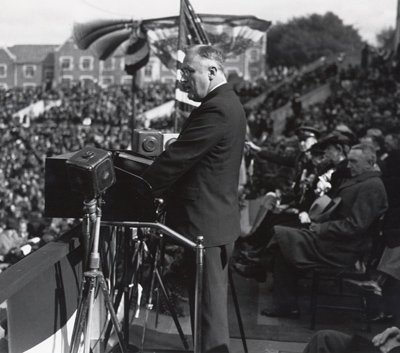
The president drew criticism from local and national sources after speeches he made in Barnesville and Gainesville in 1938, in which he criticized the low wages paid by the southern textile industry. He also used those occasions to urge Georgia voters to oust Senator Walter F. George, part of a broader strategy to “purge” the U.S. Senate of several conservative southern Democrats who had joined with Republicans to block New Deal legislation. While Georgians continued to give Roosevelt a clear majority in his 1940 and 1944 reelections, they did so by a smaller margin than they had in 1932 and 1936.
With the coming of World War II (1941-45), the commander-in-chief had little time to spend in Georgia. He visited soldiers at Fort Benning (now Fort Moore) and the Women’s Army Auxiliary Training Corps at Fort Oglethorpe but was unable to enjoy the healing effects of Warm Springs. In March 1945, his health worsening, he arrived at the Little White House for a scheduled two-week rest. There, on April 12, he died after suffering a stroke.
Being a friend to all—both famous political leaders and poor farmers—may have prevented Roosevelt from having an even greater impact on Georgia and the South. His wife, Eleanor, along with many Black leaders of the day, wanted him to do more about segregation and civil rights in general, but the president was unwilling to upset the state’s political leaders or the general white population. Federal court orders and the civil rights movement of the 1950s and 1960s would be needed to desegregate Georgia schools and allow African Americans to participate more fully in political and economic life in the South.
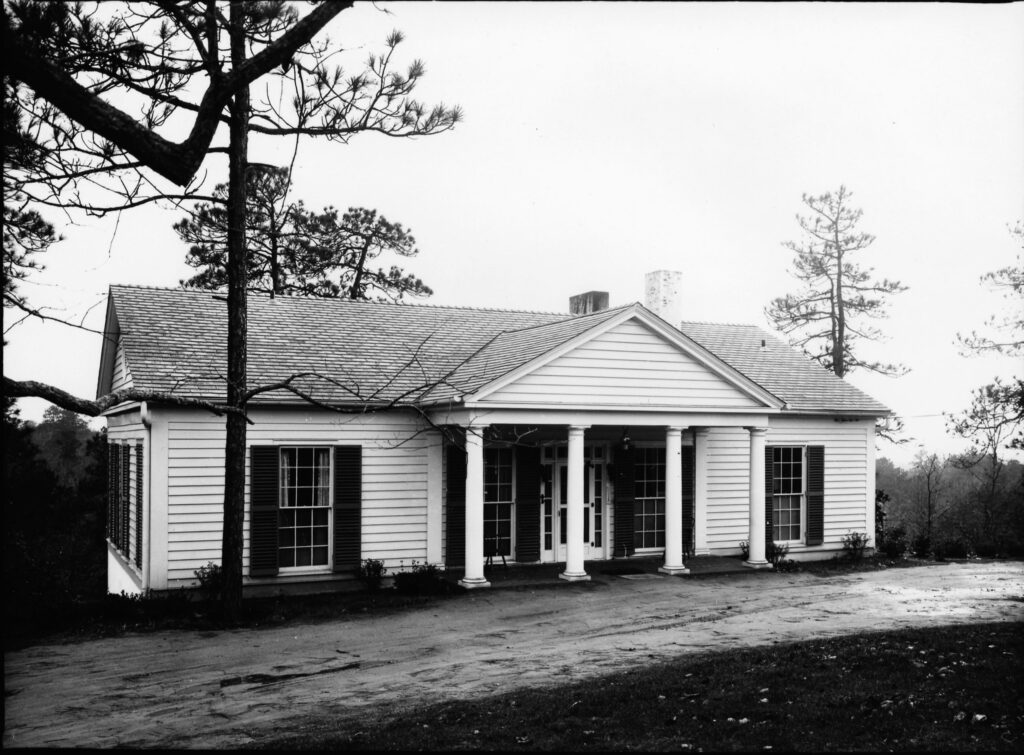
Perhaps Roosevelt’s most lasting legacy lay in inspiring millions of people, most especially the disabled. He accomplished much, despite struggling daily to overcome his paralysis. In 1927 he established the Georgia Warm Springs Foundation. Known today as the Roosevelt Warm Springs Rehabilitation Center, the facility serves patients suffering from the effects of polio. People suffering from strokes, spinal cord injuries, and other disabilities are also treated there. The Little White House is operated by the Parks, Recreation, and Historic Sites Division of the Georgia Department of Natural Resources and welcomes thousands of visitors each year.
In 2005 Home Box Office released Warm Springs, a film starring Kenneth Branagh and Cynthia Nixon that chronicles Roosevelt’s stay at Warm Springs in the 1920s.


